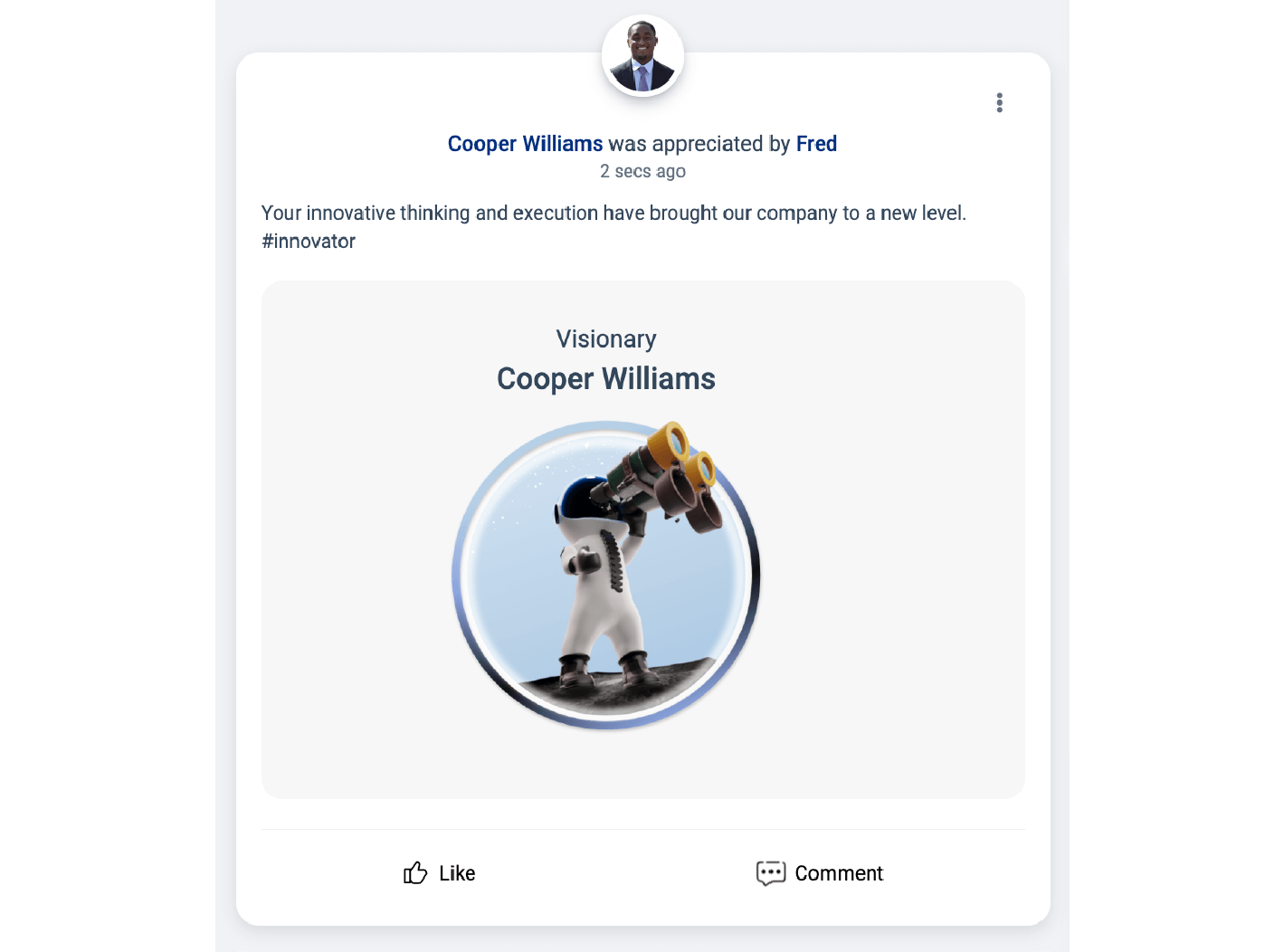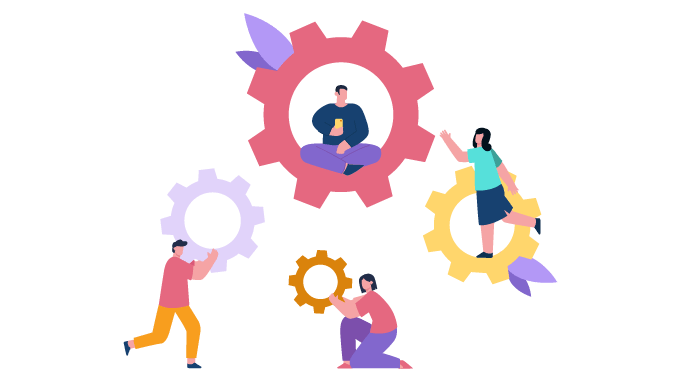10 Strategies For A Creative Company Culture With Examples You Need To Know
Creativity is intelligence having fun. - Albert Einstein
Behind every successful company lies a secret ingredient: a creative company culture that fosters innovation and empowers its employees to think outside the box.
Imagine a workspace that transcends the confines of cubicles. A place where people passionately build the future together because they love what they get to do every day. Companies embracing and prioritizing creativity pave the way for continuous innovation.
In this blog, we will explore strategies and share practical ways to build a creative work culture with real-world examples. So, let's get started and make work feel like play!
Key Takeaways
- What is Creative Company Culture?
- Understanding the Benefits of Creative Company Culture
- 10 Strategies to Create a Creative Company Culture
- Example of Companies with Great Creative Company Culture
What is a Creative Company Culture?

According to a study by Adobe, 78% of business leaders say creativity is key to their organization's future success.
Creative company culture is an environment that fosters innovation, encourages experimentation, and values imaginative thinking. It's a dynamic atmosphere where employees feel empowered to share ideas freely, take risks, and collaborate to improve each other.
In a creative company culture, employees are motivated to push boundaries and explore new avenues.
Moreover, a creative culture isn't just about the work—it's about the people. Here, leaders aren’t distant figures but approachable mentors and role models. They set the tone by actively endorsing a culture that encourages creativity and problem-solving at all levels.
Benefits of Creative Company Culture in the Workplace
-
Boosts Employee Engagement: Encouraging creativity makes employees feel engaged, leading to deeper commitment and higher job satisfaction.
-
Attracts and Retains Talent: A culture that fosters creativity and innovation becomes a magnet for skilled professionals seeking dynamic and inspiring workplaces.
-
Drives Innovation & Ideation: A creative company culture unleashes a continuous flow of fresh ideas, driving innovation and groundbreaking concepts.
-
Improves Productivity: Engaging in creative processes boosts motivation, resulting in higher-quality work and increased productivity.
-
Gives Competitive Advantage: A creative culture sets a company apart, enabling it to adapt and foretell industry trends. This helps them gain an edge in the market.
10 Strategies to Build a Creative Company Culture
1. Hire Diverse Employees

When a company commits itself to hiring diverse employees from different backgrounds and sexual orientations, it paves the way for a melting pot of ideas and concepts.
Diversity leads to a rich spectrum of perspectives, experiences, cultures, beliefs, and ideas. It fosters an environment where fresh ideas are born, nurtured, and transformed into innovative solutions.
Imagine a team where employees bring their unique experiences to the table. This mixture of diverse thoughts and experiences cultivates an environment where creativity flourishes and groundbreaking innovations emerge.
2. Foster a Judgement-free Environment

People in the organization should be free to express themselves without any judgment. This makes them more comfortable while trying out new ideas. It gives them the necessary confidence to become better.
A judgment-free work environment cultivates a psychologically safe workspace. Employees in such environments thrive and experiment with new concepts for the betterment of the organization.
For instance, you can foster a judgment-free environment by practicing open communication, celebrating differences, promoting empathy, and setting clear expectations.
Moreover, in a non-judgemental setting, failures are seen as a stepping stone to success. Embracing failure as a learning opportunity encourages resilience, perseverance, and a culture of continuous improvement.
3. Encourage Employees to Broaden Skills

A creative company culture benefits immensely from a diverse array of skills among its workforce. When employees are encouraged to broaden their skills, they bring a holistic approach to problem-solving.
Moreover, learning new skills can ignite curiosity, spark inspiration, and break the monotony of daily routine. It helps employees gain diverse perspectives and methodologies to address challenges.
Additionally, fostering a culture that encourages skill diversity boosts employee engagement and retention. Organizations can facilitate this process by offering e-learning opportunities, training programs, workshops, mentorship opportunities, and educational resources.
4. Encourage Flexibility in the Creative Process

A creative company culture flourishes when employees can explore different avenues and methodologies. This freedom paves the way for unconventional ideas and innovations.
Offering flexibility in approaching tasks encourages employees to experiment, take risks, and think beyond traditional boundaries.
Additionally, providing flexibility gives employees a say in how they approach their responsibilities. This sense of ownership cultivates intrinsic motivation, leading to higher levels of employee engagement.
5. Celebrate Failure

There is no innovation and creativity without failure. - Brené Brown
Contrary to conventional notions, a workplace that celebrates failure cultivates a culture that thrives on resilience and risk-taking.
Failure is not viewed as a setback but as a stepping stone towards improvement. This mindset encourages employees to become confident with their unconventional approaches.
Organizations can institutionalize this mindset by creating forums for rewarding innovative thinking despite unsuccessful outcomes. This will push employees to think of unconventional solutions and challenge the status quo.
6. Reward & Recognize Employees

Employees who receive recognition are more likely to produce new ideas for the company (Source: ScienceDirect)
The practice of recognizing and rewarding employees for their contributions is a dynamic approach to nurturing creative company culture. It acknowledges employees' efforts and amplifies employee morale and engagement.
For instance, you can implement a recognition system where exceptional employees are rewarded for their creative and innovative minds. You can further promote peer-to-peer recognition by encouraging employees to appreciate and celebrate their colleagues' innovative efforts.
This practice not only enhances teamwork and collaboration but also cultivates a sense of belonging among team members.

Source: Vantage Circle
7. Grant Flexible Work hours

One of the primary ways in which flexible working hours contribute to a creative company culture is by promoting work-life balance. Employees juggling personal commitments, such as childcare or education, greatly benefit from the flexibility to adjust their work hours.
Employees who can harmonize their professional and personal lives bring a renewed sense of focus, energy, and creativity to their work.
Furthermore, allowing employees to work during their most productive hours creates an environment where they can be their most creative. Whether it's early morning brainstorming sessions or late-night bursts of inspiration, flexible schedules accommodate diverse working styles.
8. Gamify Innovation with Challenges

Gamification involves applying gaming elements like points, badges, and leaderboards to boost employee engagement. Introducing game-like elements into the workplace stimulates creativity.
Challenges and competitions ignite a spirit of healthy rivalry, encouraging individuals to push their boundaries. When employees are presented with thoughtfully designed challenges, it sparks their imagination and encourages out-of-the-box solutions.
Furthermore, gamified challenges promote collaboration and teamwork. By creating challenges that require collective effort, companies encourage employees to work together and combine their strengths to achieve a common goal.
9. Build Inspiring Creative Spaces

A well-designed office space infused with color, art, natural light, and ergonomic furniture can spark inspiration and creative thinking. It also encourages collaboration and interaction among employees.
When employees from diverse backgrounds and departments interact with each other in open areas or communal spaces, it facilitates the exchange of perspectives and innovative ideas.
Furthermore, a thoughtfully designed workspace contributes to employee well-being. For instance, biophilic design elements, such as greenery, natural elements, and access to outdoor spaces, reduce stress and enhance productivity.
When employees feel comfortable and supported by their physical surroundings, they are more likely to engage in creative thinking and problem-solving.
10. Encourage Creative Hobbies and Interests

Companies investing in creativity training for employees see an increase in creative output within 6 months. (Source: HBR)
Encouraging employees to pursue their creative hobbies and interests fosters a culture that values individuality and celebrates diversity. Employees engaged in creative endeavors outside work bring fresh perspectives to the table.
When employees are accustomed to taking creative risks in their personal pursuits, they also apply the same mindset to their professional endeavors.
Moreover, when employees engage in activities they are passionate about, it contributes to their mental, emotional, and even physical well-being. Creative hobbies encourage employees to think outside the box and take risks.
Engaging in activities that involve experimentation and exploration cultivates a mindset of exploration and innovation.
Example of Companies With Great Creative Cultures

1. Etsy
Etsy, an e-commerce platform specializing in handmade and vintage goods, prides itself on fostering a culture that champions creativity and individuality.
The company promotes a sense of community by hosting workshops, art sessions, and events that encourage employees to express their creativity.
Its emphasis on an inclusive and diverse workforce creates an environment where different perspectives and ideas are celebrated. As a result, it fuels innovation in product development and business strategies.
2. SpaceX
SpaceX, Elon Musk's aerospace company, cultivates an ambitious and pioneering culture centered around its mission to revolutionize space technology.
The company encourages employees to push boundaries and think outside the box by fostering a culture that values autonomy and calculated risk-taking.
SpaceX's fast-paced environment promotes innovation by focusing on rapid iteration and problem-solving. Employees are empowered to contribute ideas and tackle complex challenges, fostering a culture of continuous improvement.
The company's dedication to its vision for space exploration creates a sense of purpose among employees, driving them to achieve remarkable feats in the aerospace industry.
3. Netflix
Netflix operates under the principle of allowing employees to make decisions without micromanagement.
The company allows unlimited vacation time and flexible work hours, focusing on results rather than hours worked. This promotes a culture of accountability and trust among employees.
Additionally, Netflix nurtures creative company culture by encouraging risk-taking and learning from failures. The company's values are deeply ingrained in its culture, fostering an environment where employees feel empowered to make impactful contributions.
4. IDEO
IDEO is a design consulting firm known for its human-centered design approach and collaborative culture.
The company values creativity and multidisciplinary collaboration, bringing designers, engineers, and business professionals together to solve complex problems.
IDEO's culture encourages experimentation and iteration, fostering an environment where diverse perspectives and ideas are welcomed and celebrated. The company's workspace is designed to inspire creativity, with open areas for brainstorming and prototyping.
5. Pixar
At the heart of Pixar's culture lies a relentless pursuit of innovation and creativity. The studio is known for pushing the boundaries of storytelling and animation technology.
One of the key aspects of Pixar's success is its commitment to nurturing a creative environment where unconventional ideas are welcomed.
The studio fosters a culture that encourages risk-taking and embraces failure as a part of the creative process. Employees are free to experiment and iterate, leading to groundbreaking storytelling and visually stunning animation in their films.
6. Google
Google offices worldwide are known for their unique and vibrant designs. The workspace is carefully crafted to encourage creativity and collaboration.
Open floor plans, colorful and comfortable furniture, recreational areas, and flexible spaces are common features across Google's offices. It facilitates spontaneous interactions, idea-sharing, and teamwork among employees.
The offices often incorporate diverse themes, artwork, and amenities that reflect local cultures, contributing to a sense of inclusivity and belonging.
The company also provides various facilities and amenities that cater to employees' diverse needs and interests. This includes on-site cafeterias serving gourmet meals, fitness centers, relaxation spaces, gaming areas, and even nap pods.
7. Adobe
Adobe places a strong emphasis on empowering its employees. The company actively promotes diversity in its workforce and encourages different perspectives to foster innovation and creativity.
The work environment at Adobe is designed to encourage collaboration, flexibility, and a healthy work-life balance. The offices are often designed with open layouts, collaborative spaces, and amenities that promote comfort and creativity.
It also hosts innovation challenges, hackathons, and internal projects that allow employees to experiment and explore new concepts. They also offer resources, training programs, and mentorship for employees to enhance their skills.
Challenges in Building Creative Company Culture

Lack of Resource
Limited resources, including time, budget, and tools, pose a significant challenge in nurturing a creative culture. However, organizations can encourage creativity within constraints by emphasizing resourcefulness and creativity in problem-solving.
Hierarchy and Bureaucracy
Hierarchical structures and bureaucratic processes can stifle creativity by imposing rigid guidelines and limiting autonomy. It restricts employees' freedom to explore innovative ideas.
Resistance to Change
Employees comfortable with established norms might resist the change to move on to creative company culture. Overcoming this challenge involves creating an environment where employees feel engaged and involved in the transition.
For instance, companies can organize workshops, training sessions, and interactive forums to explain the benefits of the new culture. It can foster open communication and demonstrate the advantages of embracing change.
Conclusion
Every company's creative culture is unique. What works for a tech startup might not work for a traditional law firm. Each organization's version of this culture is uniquely shaped by its industry, values, and history.
But the common thread is the commitment to fostering an environment that values imagination, encourages collaboration, and embraces change. So, go ahead and build an environment that actively cultivates creativity!


















